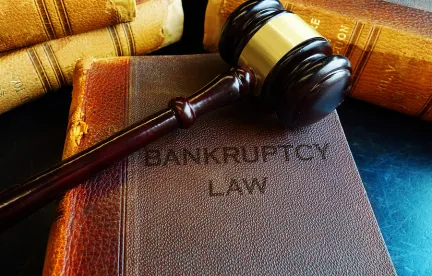Most observers of the world of chapter 11 bankruptcy cases – and particularly those professionals who practice in that arena – will not be surprised to learn that their individual experiences and anecdotal reports suggesting that the duration of Chapter 11 cases has continued to shrink have been validated by Fitch Ratings, one of the “big three” credit rating agencies. Fitch’s August 7, 2018 report, entitled “Shrinking Length of U.S. Bankruptcies,” provides many useful statistics and analyses of recent and historical trends in chapter 11 cases.
According to Fitch, the median duration from the date of filing of a chapter 11 petition to the date of confirmation of a plan of reorganization or liquidation has been declining significantly – with four months being the median duration for the 30 U.S. cases studied with plans confirmed in 2017 and five months for the 34 cases studied with plans confirmed in 2016. In contrast, the median duration for the 304 cases which Fitch studied where plans were confirmed between 2003 and early 2018 was seven months.
The median duration of the cases examined by Fitch for traditional chapter 11, pre-arranged (or pre-negotiated) and prepackaged cases were eleven, four and two months, respectively. As demonstrated by those statistics, a significant reason for the expedited proceedings has been the prevalence of prepackaged plans of reorganizations which, as would be expected, take far less time to confirm. Out of 304 cases studied by Fitch with plans confirmed between 2003 and 2016, 22% were prepackaged. Among all public companies listed on the Bankruptcydata.com website with assets of $500 million to $10 billion whose cases were filed between January, 2003 and December, 2017, the number of prepackaged cases as a percentage of all public company filings increased dramatically – from approximately 6% in 2003 to 42% in 2017.
According to Sharon Bonelli, Senior Director of Leveraged Finance for Fitch, “[t]he compressed timeframe is benefitting creditors, minimizing employee and trade union uncertainty, and lessening disruption to operations.” However, “[o]n the flipside, there is a risk that an accelerated valuation or asset sale can be rushed without being fully market tested, adversely affecting claimholders lower in the priority waterfall than the fulcrum security.”
Fitch’s analysis demonstrates that companies continue to spend less and less time in chapter 11, resulting in creditors receiving faster recoveries, which minimizes the impact of the time value of money. What the Fitch report does not address, however, is the relationship between the expedited duration of today’s chapter 11 proceedings and the percentage recoveries received by creditors – particularly unsecured creditors –versus historical averages. Bankruptcy observers and practitioners would undoubtedly be eager to see those statistics.
According to Fitch, a major driver for the increasing swiftness of chapter 11 cases has been the more limited use of traditional chapter 11 reorganization tools and objectives, such that in many instances the proceedings are utilized solely to quickly affect a balance sheet restructuring of the distressed company through the conversion of debt to equity, or for selling substantially all of the assets of the company through a credit bid – and little else.
Fitch also examined what it termed the “drivers of longer-duration cases,” identifying the factors in a number of larger cases which caused them to take longer to confirm than those with relatively smaller asset values. The factors which tended to increase the length of cases, according to Fitch, were “Multi-Level, Multi Issuer Debt Structures,” “Legacy Liabilities,” and “Poor Timing.”
Examples of relatively long bankruptcy proceedings resulting from complicated capital structures included Energy Future Holdings (48 months), Mirant Corporation (29 months), Calpine Corporation (24 months) and Caesars Entertainment Operating Company, Inc. (24 months). These proceedings involved leveraged buyout transactions, numerous secured and unsecured lenders, complex intercompany transactions and/or litigious inter-creditor disputes.
Examples of legacy liabilities – such as union and labor issues and underfunded pensions plans – affecting the length of cases were those of ASARCO LLC (52 months), Interstate Bakeries Corp. (51 months) and UAL Corp. (38 months).
Finally, an example of a “poor timing” case was that of Delphi Corporation – which took nearly four years to complete – which filed for chapter 11 protection just prior to a severe industry downturn.
Fitch also examined the lengths of chapter 11 cases which it studied by sector, finding that those with the shortest case durations were companies in the broadcasting/media and energy/industrial manufacturing sectors – five months for each. These sectors had higher percentages of prepackaged or prearranged plans and some of the companies had less complex capital structures. At the other end of the spectrum, transportation industry cases – particularly those of airlines – had some of the longest case lengths, largely due to the need for negotiations with unions and aircraft lessors, as well as general industry conditions.
Finally, Fitch reported on the World Bank’s Doing Business study, which measured – in 25 countries having the world’s largest economies – the time from when a hypothetical hotel in the country’s largest city defaulted under a 10-year mortgage until payment of some or all of its obligations to the lending bank, finding that the median length of the relevant insolvency proceeding was 1.45 years, with the U.S. having a median length of 1 year.




 />i
/>i

